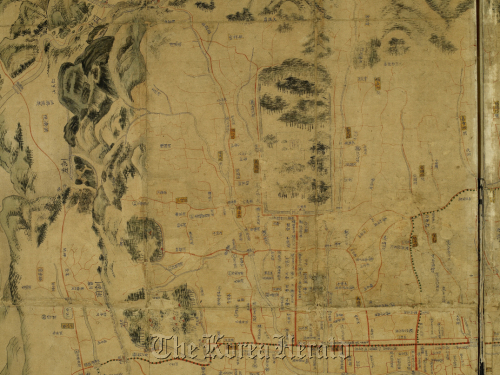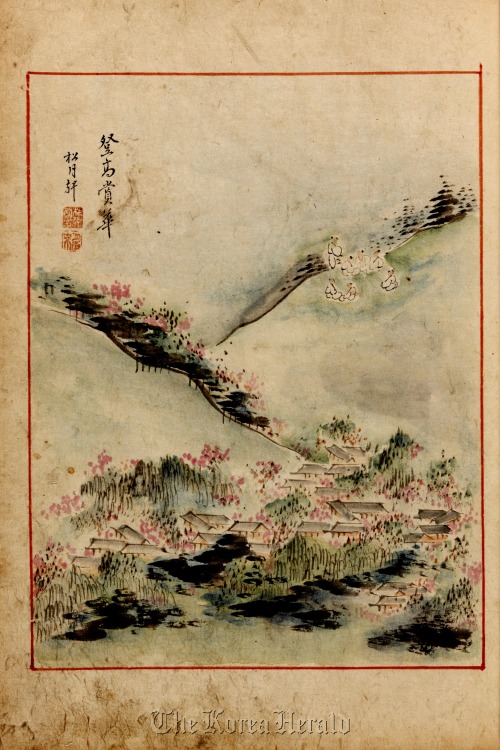Cultural and political legacy of Joseon’s bureaucrats and other skilled workers showcased in Seoul
Together they watched the moon, composed poems, and practiced political activities surrounded by the beautiful nature of Inwangsan in Seoul.
The “Jungin” of the Joseon Dynasty, who belonged to the “middle” class Utdaebetween the aristocrats and the commoners, experienced both caste privileges and discriminations for their social ambiguity. Almost all of them lived in Seoul, while working as skilled professionals such as medical doctors, painters, astronomers, lawyers and foreign language translators.
The Seoul Museum of History’s special exhibition, “Passion for Culture: Middle-class community at the Foot of Mt. Inwang” features the cultural and political legacy of the Jungin as well as the shared vision they had for fair and just society.
Together they watched the moon, composed poems, and practiced political activities surrounded by the beautiful nature of Inwangsan in Seoul.
The “Jungin” of the Joseon Dynasty, who belonged to the “middle” class Utdaebetween the aristocrats and the commoners, experienced both caste privileges and discriminations for their social ambiguity. Almost all of them lived in Seoul, while working as skilled professionals such as medical doctors, painters, astronomers, lawyers and foreign language translators.
The Seoul Museum of History’s special exhibition, “Passion for Culture: Middle-class community at the Foot of Mt. Inwang” features the cultural and political legacy of the Jungin as well as the shared vision they had for fair and just society.

The exhibition begins with the historical significance of Utdae, a neighborhood in Seoul where the Jungin held literary and social meetings.
Often referred as “Seochon” nowadays, Utdae was the area that stretched from the west of Joseon’s Gyeongbok palace and to the foot of Inwangsan. The Jungin, who all interacted with one another in Utdae community, created their own unique culture that reflected their professional skills and political aspirations.
“The area where Utdae was located was one of the most beautiful sites in Joseon’s capital at the time,” curator Park Sang-bin of the Seoul Museum of History told The Korea Herald. “It was also near Gyeongbok Palace, where most of the Jungin worked. Its convenient location and beautiful scenery made it an ideal place for them to compose poems do other literary activities.”
One of the most significant legacies of Utdae culture is the collections of poems that were published by the members of Jungin poetry club called “Okgye-sisa.” The club was founded in 1786 by Jungin librarians who worked for Joseon’s royal archive, Gyujanggak.
The poetry club lasted for about 30 years, producing countless significant literary works that affected both Jungin and Joseon culture as a whole. Their poems dealt with Seoul and its nature, the friendship they shared, and their class identity which barred them from obtaining higher positions in spite of their skills and abilities.
The exhibition displays “Okgye-sipyiseungcheop,” a collection of poetry and pictures compiled by “Okgye-sisa” members after their gatherings. The paintings included in the collection showcases some exquisite sceneries of Inwangsan and how the members of the poetry club were inspired by its beauty while composing poems of their own.

As the Jungin people did not hold official titles unlike the aristocrats, they feared their literary works would soon be forgotten unless they made a record of them. Many Jungin poets, including the members of “Okgye-sisa,” spent their own money to publish their work.
After publishing the very first collection of their poems “Sodaepungyo” in 1737, they set up a rule of their own to produce a collection in every 60 years. The Jungin members kept up the tradition by publishing “Pungyosokseon” in 1797 and “Pungyosamseon” in 1857.
The Jungin also protested the limits of Joseon’s social class system, officially asking the king to change the rules so they can gain access to higher government positions. Some 1,670 Jungin low-ranking officials together raised money to participate in the “Tongcheong Movement” of the 1850s, which urged the authorities guarantee equality of opportunity regardless of one’s social status.
Curator Park said the literary activities by the Jungin later contributed to the modernization of Korea as a neo-Confucian state. “The reason why the Jungins could produce such rich culture was because they had the professional skills and the financial ability to produce something of their own,” he said. “And their political activities against the caste system of Joseon, such as ‘Tongcheong Movement,’ later became the basis of Korea’s modernization as it promoted one’s right to equality and social inclusion.”
“Passion for Culture: Middle-class community at the Foot of Mt. Inwang”runs through Sept. 18. Admission is free. For information, call (02) 724-0114.
By Claire Lee (dyc@heraldcorp.com)








![[KH Explains] Hyundai's full hybrid edge to pay off amid slow transition to pure EVs](http://res.heraldm.com/phpwas/restmb_idxmake.php?idx=644&simg=/content/image/2024/04/18/20240418050645_0.jpg&u=20240419100350)






![[From the Scene] Monks, Buddhists hail return of remains of Buddhas](http://res.heraldm.com/phpwas/restmb_idxmake.php?idx=652&simg=/content/image/2024/04/19/20240419050617_0.jpg&u=20240419175937)

![[KH Explains] Hyundai's full hybrid edge to pay off amid slow transition to pure EVs](http://res.heraldm.com/phpwas/restmb_idxmake.php?idx=652&simg=/content/image/2024/04/18/20240418050645_0.jpg&u=20240419100350)

![[Today’s K-pop] Illit drops debut single remix](http://res.heraldm.com/phpwas/restmb_idxmake.php?idx=642&simg=/content/image/2024/04/19/20240419050612_0.jpg&u=)